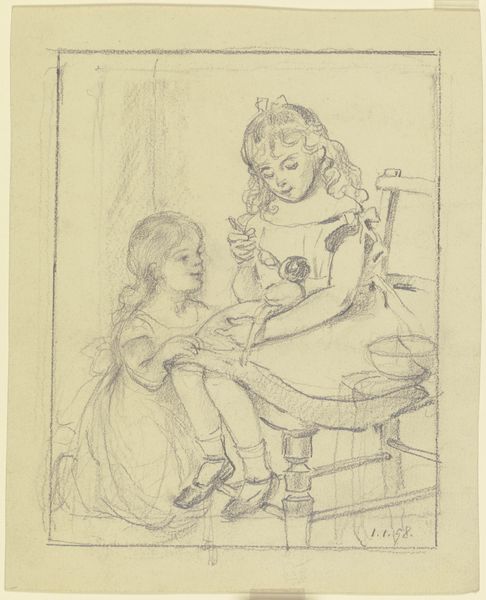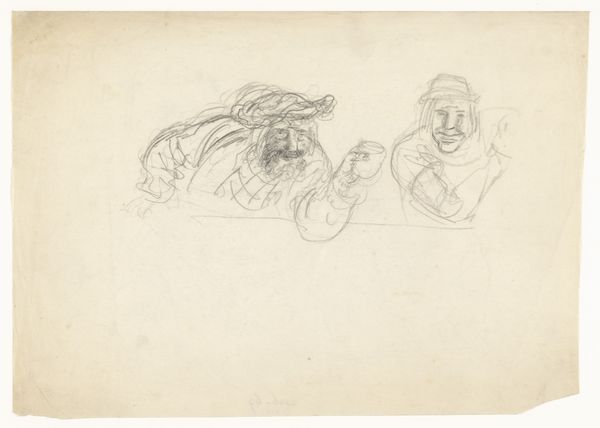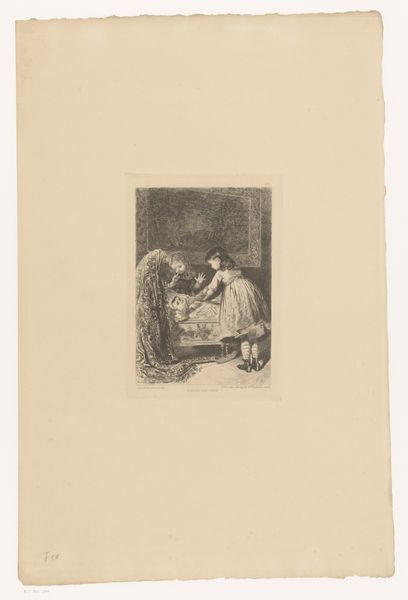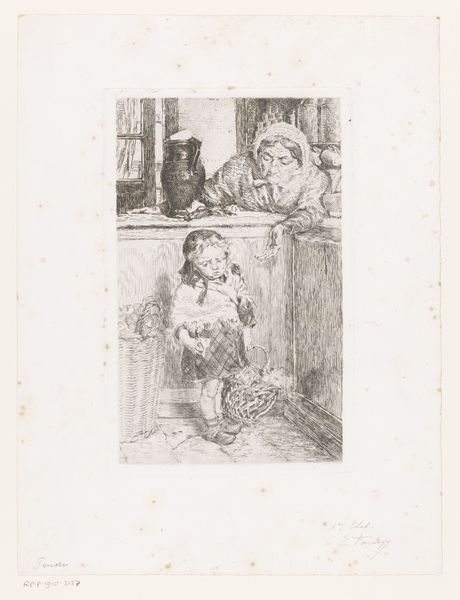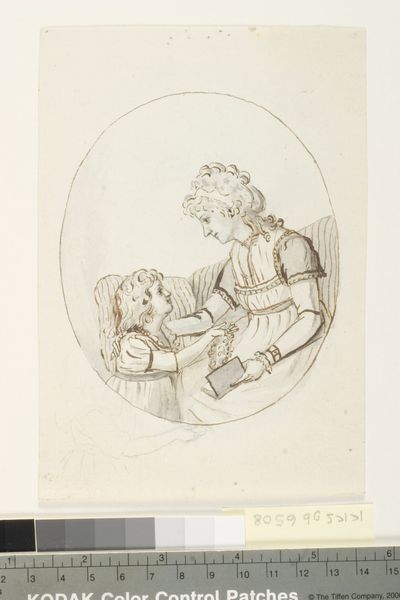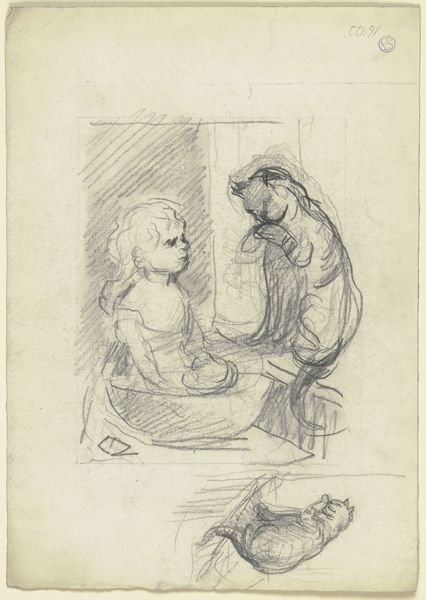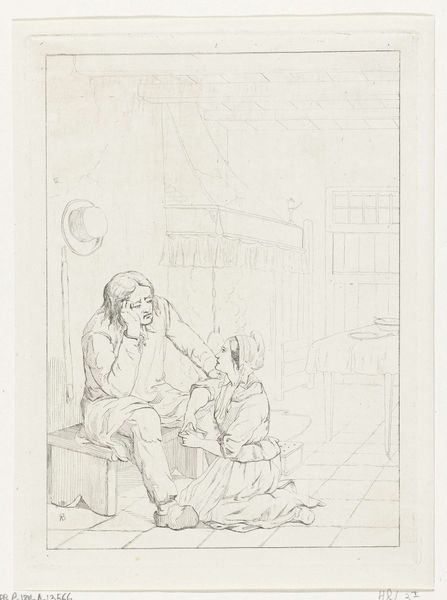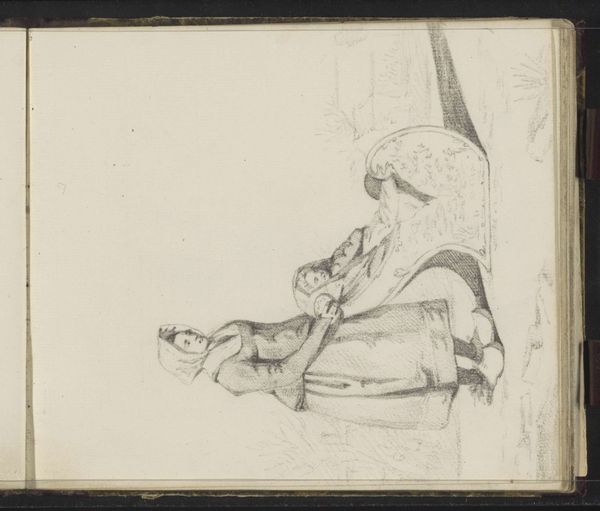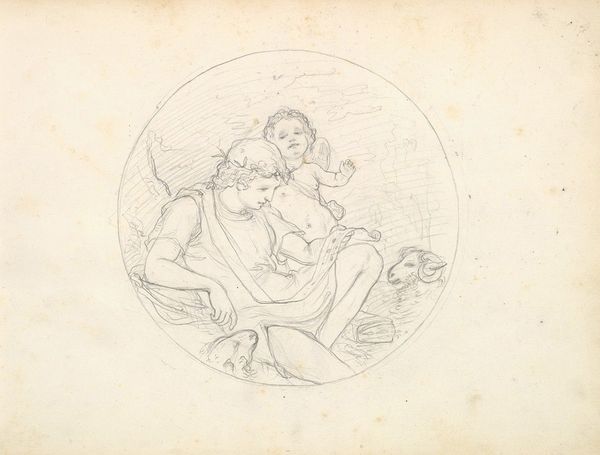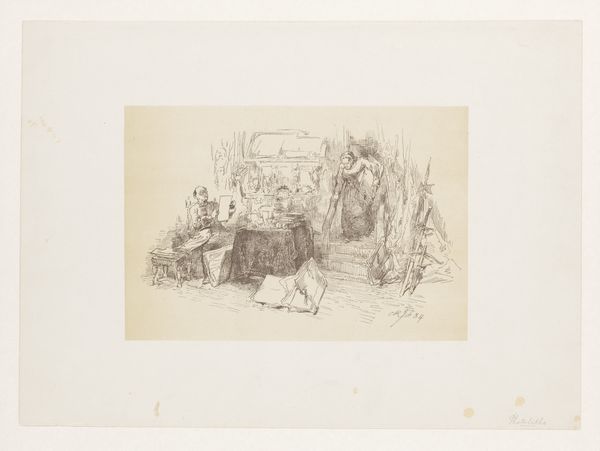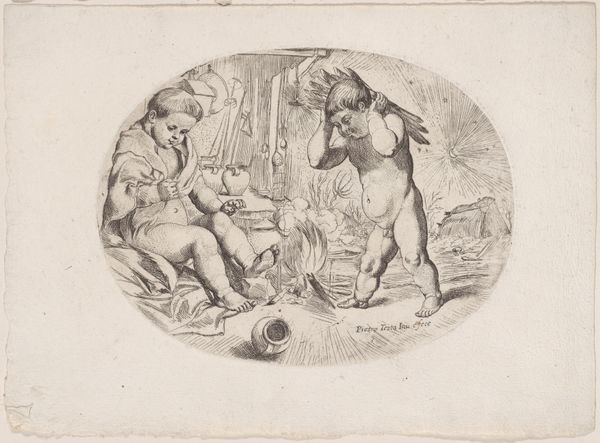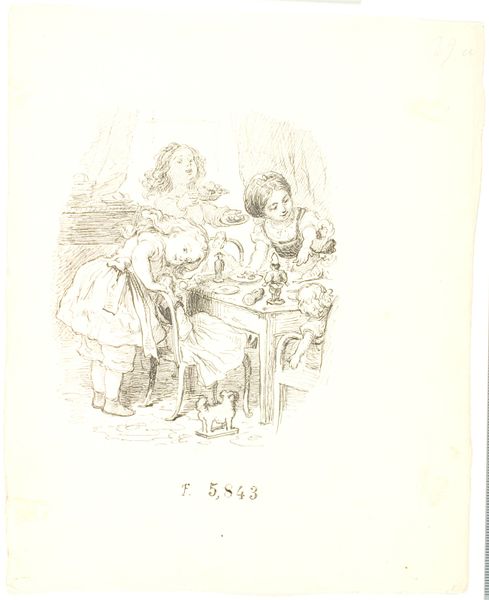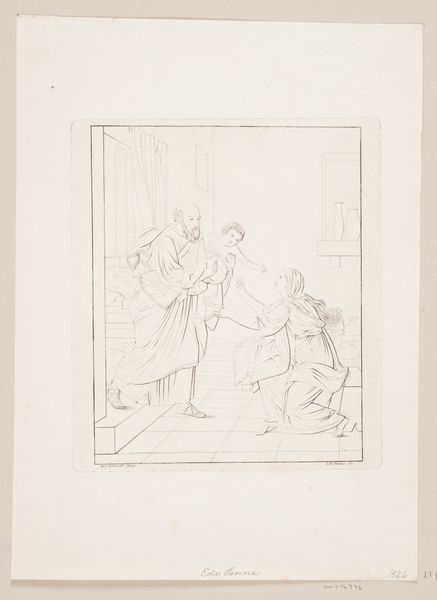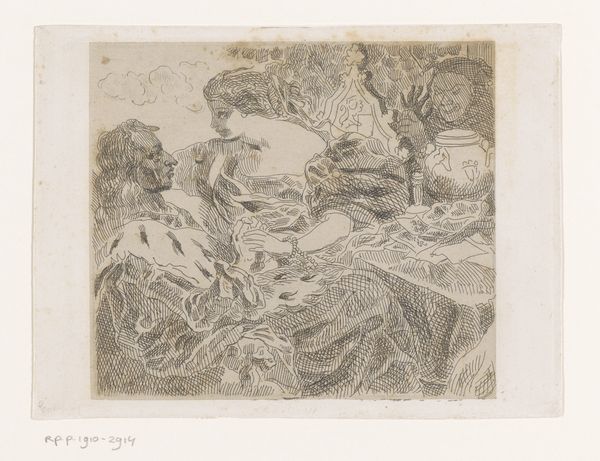
Arveprins Frederik med arveprinsen (Chr. VIII) viser et portræt af den afdøde arveprinsesse Sofie Frederikke 1795
drawing
portrait
drawing
neoclacissism
figuration
form
line
Dimensions: 117 mm (height) x 167 mm (width) (bladmaal)
Editor: This is Gerhard Ludvig Lahde's "Arveprins Frederik med arveprinsen (Chr. VIII) viser et portræt af den afdøde arveprinsesse Sofie Frederikke", a drawing from 1795. It feels very… contained. Like a private moment captured in a very formal way. The figures are almost floating within this simple oval. What do you see in it? Curator: What I find compelling is the very public role that grief played for royal families. Consider that this intimate scene is deliberately framed and intended for display. Notice the clean, almost clinical lines of the neoclassical style—serving not just an aesthetic, but a function. How do you think that stylistic choice influences our reading of the portrayed emotion? Editor: Well, the cleanness almost makes it feel like a historical record more than an emotional expression. If it was messier, more romantic, wouldn't we feel closer to their grief? Curator: Precisely! Neoclassicism, in this context, becomes a tool for controlling and shaping the narrative. It emphasizes reason and order, which the monarchy used to project stability, even amidst personal tragedy. Consider who commissioned the piece, where it would have been displayed, and who would have viewed it. That directs how we interpret it. Editor: So the display of grief becomes a political act, a demonstration of resilience for the state. Almost like… propaganda? Curator: Not overtly, but absolutely functioning within a network of power. Even grief had a function within the public spectacle of royalty. The image reinforces existing hierarchies and narratives. What does knowing that suggest to you about other portraiture from this period? Editor: I see now; it wasn’t just about capturing a likeness. It was about shaping perception, too. That really changes how I view these historical portraits. Curator: Exactly. And appreciating that gives you an awareness to question every mark the artist puts to the page.
Comments
No comments
Be the first to comment and join the conversation on the ultimate creative platform.
